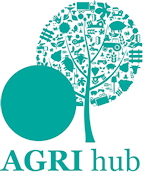 Landowners letting agricultural land to diversified businesses will welcome reassurance from HMRC that it can qualify for Agricultural Property Relief (APR) from Inheritance Tax.
Landowners letting agricultural land to diversified businesses will welcome reassurance from HMRC that it can qualify for Agricultural Property Relief (APR) from Inheritance Tax.
The question arose in relation to tenancies in Northern Ireland, as to whether APR can apply to let land where there is no statutory code of agricultural tenancy law. “Historically, there has been no framework for agricultural tenancies in Northern Ireland,” says Jeremy Moody, Secretary and Adviser to the CAAV. “But there is growing interest in tenancy agreements in the province, so we sought confirmation over the issue from HMRC.”
Speaking at the Autumn Countryside Taxation Conference in York on Wednesday, 5 October, Mr Moody said that the response from HMRC had important implications for land let in Great Britain as well, particularly where it was let under non-agricultural legislation, as with land used for agriculture within a business or common law letting.
“Most agricultural land that is let in Great Britain, under Farm Business Tenancies or Agricultural Holdings Act tenancies, will be covered under formal agricultural legislation,” explained Mr Moody. “But some agreements fall outside this legislatory framework, such as when agricultural land is let to a non-agricultural business.”
A typical example could be where agricultural land is let to an equine business, which grazes the pasture with some cattle to manage the grass, explained Mr Moody. “Or perhaps the riding centre uses some of the land to grow its own hay or cereals as feed. In these situations, APR could be something of a grey area – having clarification from HMRC will be welcome to landowners wanting to assure Inheritance Tax relief.”
The issue has come to a head in Northern Ireland as the farming industry is increasingly looking for longer-term agreements to improve the management of tenanted land. “Over the years, conacre agreements have evolved there to facilitate the letting of land on short-term seasonal access, which now accounts for 30% of Northern Ireland’s farmland,” said Mr Moody. “In finding a solution to this demand for longer tenancies, it’s been important to understand the tax implications.”
In response to Mr Moody’s request for clarity, HMRC’s IHT Policy Division said: “Agricultural Property Relief afforded to qualifying agricultural property let on a tenancy granted on or after 1 September 1995 by section 116(2)(c) of the IHT Act (1984) is not dependent on whether the tenancy is under a code of law, but just has to be tenancy of that property. Such tenancies would include those in Northern Ireland.”
To be eligible for full APR, the land must qualify as agricultural property, be let on any form of tenancy that started after 1995, and remain in agricultural use. “Moreover, this covers any tenancy of qualifying farmland, however long it is for, while conacre must be used for less than a year to give the same relief,” said Mr Moody. “That would also apply to any qualifying land let under local law anywhere in the European Economic Area, including the Irish Republic.”
HMRC’s assurance added powerfully to the case for Northern Ireland’s landowners to look positively at using tenancies to let land to good farmers, rather than stay with conacre, he added. “That can give a better framework for confidence, investment and improvement, benefiting the rural economy.”
- For more information contact Jeremy Moody on 01452 831815 or email [email protected].



